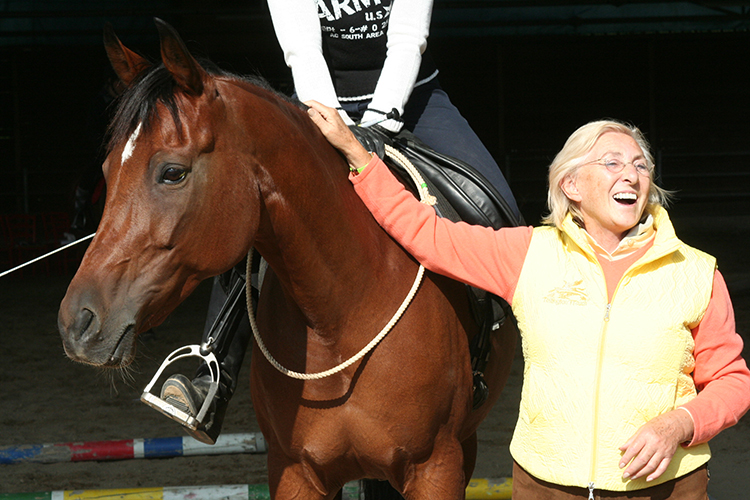 Linda Tellington-Jones… Fake or Genius? There have been horse wizards since the birth of time. The whisperers, the Circus Professors, the legendary tamers who could work marvels with rogue horses… but when the show is finished, have they left anything that the average horseperson can take home and use? But Linda Tellington-Jones is no average horse expert. When you realise that Ms Tellington-Jones counts amongst her admirers not one, but two dressage World Champions – Elena Petushkova and Christine Stückelberger – then she at least deserves a very very good hearing – and we sent dedicated horse person, and ace journalist, Cathryn Banner, to one of the clinics to look at, and evaluate the famed TEAM techniques…
Linda Tellington-Jones… Fake or Genius? There have been horse wizards since the birth of time. The whisperers, the Circus Professors, the legendary tamers who could work marvels with rogue horses… but when the show is finished, have they left anything that the average horseperson can take home and use? But Linda Tellington-Jones is no average horse expert. When you realise that Ms Tellington-Jones counts amongst her admirers not one, but two dressage World Champions – Elena Petushkova and Christine Stückelberger – then she at least deserves a very very good hearing – and we sent dedicated horse person, and ace journalist, Cathryn Banner, to one of the clinics to look at, and evaluate the famed TEAM techniques…
Horses. Beautiful, big, gentle creatures. They’re our trusty friends, happily ready and willing to do our bidding, anywhere, anytime, without question or demure. Is this how it is with you and your horse?
“Oh yes”, I can hear you reply, ‘That is, after he’s been lunged for 20 and ridden in for another 20. The Market Harborough helps, especially if it’s a windy day… “
Let’s take a moment to muse about our relationship with these special creatures. About what is really going on as we ‘train’ our horses.
What if someone told you that she could achieve in a week, what it takes normal training methods a year in the re-education of an ex-racehorse.
What if she said it only takes a couple of sessions to establish trust and rapport with a flighty youngster.
What if she said she could help both your dressage horse to get that brilliant, free extension, and your jumper to clear bigger fences.
Before you dismiss these claims as so much hot air, let me introduce you to Linda Tellington-Jones. The lady behind these remarkable contentions has just visited Australia to conduct clinics. In her wake she has left riders with a whole new perspective on the horse, and horse training. I visited one such clinic at Ravenswood Riding Institute at Mt Compass, one hour’s drive south of Adelaide.
I don’t know what I expected as I crept into the indoor arena during an afternoon session, but what I saw took me by surprise. School participants were in pairs, one member standing on one leg with eyes closed while the other felt arm, shoulder and uplifted leg with probing fingers. And there was not a horse in sight! Directing operations was a small American woman with a loud, clear calm voice. What have we got here?’ I wondered, and tried to look inconspicuous in case anyone decided to poke at me as well.
Klaus Balkenhol with Linda and Nadine Capellmann at a Tellington Method demo
Tellington-Jones was giving everyone a first hand experience of what she calls the Tellington touch. It’s part of TEAM, an acronym for Tellington-Jones Equine Awareness Method. I could see straight away that the students were enjoying the clinic, but really…!
At tea break words like AMAZING and FANTASTIC tripped freely from the tongues of the clinicians, among them such noted and accomplished South Australian equestrians as eventer Scott Keach, and dressage rider Marion Von Saagh. Later I was to see for myself, Carrington, a lovely seven year old thoroughbred gelding, off the track six months and unreformed, had found his way to David Brooks’ stables at Ravenswood only two weeks before the clinic.
When I say unreformed, I mean head held stiffly aloft by the neck overdeveloped in the underline, back hollowed, nervous, quick steps and a little or no lateral bend in his body as he moves on curved lines.
On the first day, Tellington-Jones spent 40 minutes working on him as he stood in the arena. She put to work that Tellington touch, probing, massaging, fondling and manipulating every part of his body in a systematic way. She is, she tells us, opening up new nerve pathways, searching for areas of pain and awakening body awareness. She bases this touch session of Feldenkrals body work, a method normally used on people.
Feldenkrais contends that by manipulating and stimulating the muscles of the body through non habitual movements, the brain can be taught different ways of performing familiar actions, and that these different ways may be as good as, or even better, that the body’s original version.
The importance of this is two-fold, Tellington-Jones tells us: “First, it enables the brain to settle upon a better way of performing a familiar action that it has previously known, and second, it gives the brain alternative methods of performing an action when the normal method is disrupted through injury or ill-health. The load is switched to other muscles, taking the stress off the injured muscles, allowing them to heal.”
Tellington-Jones tells us that increasing a horse’s awareness of its body therefore, makes it more sound and better able to deal with the stresses it encounters in everyday life.
This body work also enables the TEAM practitioner to find low level injuries. These sore spots could be causing resistances without actually being apparent in the action of the horse. Healing promotes cooperation and performance. Tellington-Jones tells us that she finds most dressage horses are sore in the poll area, while jumpers are chronically sore in the chest between the front legs. And she has found most horses to be mildly sore in the back.
Carrington’s defences melted. Whether or not it was doing him any good, he was clearly enjoying the session, happily allowing Tellington-Jones to pull, push and prod him in what seemed to us onlookers the most unusual manner. Legs were lifted and rotated, neck bent back either side to the shoulder, ears pulled (the base of the ears is an acupuncture meridian, apparently) lips rolled up, neck vertebrae massaged, back probed, tail pulled and favourite itchy spot scratched. According to Tellington-Jones, Carrington needed lots of work on the poll, head, nose and gums, where he was especially touchy. Also there didn’t seem to be a lot of connection between the front and hind ends, so the back and the hind legs received some attention too.
The next day Tellington-Jones took the gelding onto stage two of her program, the work in hand. As she tells it, through the foundation of body work, we have had an opportunity to identify and work on our horses’ ‘trouble spots’, areas of habitual holding and tension that have formed barriers to learning and performance. We’ve seen ways to break through those patterns and restructure the horse’s response in specific situations through non-habitual, non-painful modes of touch.
More below…
In essence, we’ve learned the elements of a new language; now we will put that language to work. In the in-hand exercises, our goals are to teach the horse:
– Obedience without fear
– Self control and, as a result, improved coordination
– To wait for our signals
– To accept the whip as a cue, without fear
– Refinement and expansion of the ability to respond to our most subtle movements, ‘mirroring’ us
– Accelerated ability to learn new skills
– A new confidence and willingness to learn
“These exercises will be different to the body work. We are moving from exercises based on exploration and intuition to those that depend on precision timing,” Linda warns. She uses an ordinary head collar, a lead rope with 80cm of chain threaded through the head collar, across the noseband, and a 1.2 metre untasseled whip, which is initially stroked over the horse’s body to accustom him to its non-threatening touch.
Tellington-Jones continues: ‘The in-hand exercises form a bridge between the body work and the final step, under saddle work. Although useful for all horses, these exercises are of particular value for young, timid, nervous, lazy or stubborn horses, horses who are ‘pullers’ or heavy on the forehand and horses who are oversensitive to the aids.”
“Consider a puller, a horse who tries to run through the bit at every opportunity. Most of these horses are actually nervous or afraid”, says Tellington-Jones. “On his back, you’ll have trouble. But standing on the ground using a chain shank and whip with sensitivity and awareness, you can show him that you are higher in the pecking order, while at the same time establishing a new partnership with him. If you can’t control a horse on the ground, how are you going to control him under saddle? Force isn’t the answer. If you use force, he will use it on you too.”
And so, on to the specifics. “Most horses are led in such a way that they are out of balance, not paying attention, leaning on the bit or lugging on the lead rope,” observes Tellington-Jones. “Horses learn to pull against the rein or the rope, either hanging back or lunging forward, so that they’re out ahead of you and out of control if they decide to take off. One of the hardest things for people to learn is how to lead a horse in a way that encourages balance and obedience.”
“Instead of letting the horse wander on ahead of you, the idea is to teach him to keep his nose even with your shoulder; instead of letting him walk on top of you, you will teach him to maintain a distance of about two or three feet from your body. To do this, grasp the end of the chain (about eight inches from the halter ring), keeping your elbow slightly bent with your arm extended.”
“The whip, which can be thought of as an extension of your arm, will have many uses in these exercises, among them to teach the horse to:
– Keep a specific distance from you
– Slow down, come forward, stay back or stop
– Take a half step
– Turn on the forehand
– Move laterally (side pass)
– Become more aware of his balance and his body.”
Tellington-Jones goes through the seven leading positions she has developed to establish the obedience and control she has been talking about:
“In the beginning, you’ll be alternating frequently between the tip and butt end of the whip,” she warns. “The horse who ignores your cues, insists in charging over you or is generally hysterical may need a solid, well-timed ‘clunk’ on the bony ridge of his nose with the heavier butt end of the whip – not to punish him but simply to bring him to his senses. You can also flip the whip to the butt end for chest of foreleg tapping anytime you find you need a slightly more amplified cue. The objective,” says Tellirigton-Jones, “is to make the signal clearer, not harsher. Once he understands, you can go back to the lightest touch. You are seeking understanding and obedience, not fear.”
Carrington, our guinea pig horse, is acquainted with the new system, and quickly relaxes as he realises what is required of him, softening his eyes, lowering his head, his ears flopping attentively to Tellington-Jones. Now that he’s got the hang of it, she leads him through the ‘labyrinth’, a maze of poles on the ground, to fine tune the new understanding she has with him. It’s a precision exercise. The gelding is asked for one step at a time, tight turns and side pass, all from the leading position of the head.
He responds quietly and happily. Other tasks are set for him – he is asked to step over a ‘star’ of poles, splayed out and resting one end up on a hay bale. He is ‘lunged’ over a more conventional row of trotting poles and then these poles are raised one end each onto hay bales, first pole left side, second pole right side and so on, so that the horse is faced with a really complex problem. His back is round and swinging, his poll now staying below wither height as he assesses each new situation. The poles get the horse to focus she tells us, and the exercises are teaching the horse a new, desired response to his tasks.
Soon after, Carrington is saddled up and David Brooks climbs aboard. The horse is barely recognizable as the uptight, stiffly resisting ex-racehorse of the morning before. His neck is down, stretched and relaxed, his eye round and happy, and his step long and elastic. David is ecstatic, and school participants murmur their appreciation of the transformation. Tellington-Jones uses the horse to demonstrate the use of special headgear. The Lindell is a hitless bridle which steadies horses through the body, and is of particular value, she says, for young horses or those who are too sensitive in the mouth, hard mouthed or horses prone to sticking out the tongue, becoming overbent.
Another bit which looks like something out of the dark ages is demonstrated next. It is a large, stainless steel bit with a copper roller in the mouthpiece, and is designed to be used with two reins. The shank is loose and curved back which apparently has the effect of softening the mouth, poll, back and hips.
Tellington-Jones recommends it for horses who are disobedient, on the forehand, strung out, stiff in the back or hindquarters – or sour. Carrington seems to go happily in both pieces of apparatus.
It has been a very full two days, and several horses have been ‘done over’, all with good result. There is much more to the TEAM repertoire than can be shown to us in one weekend, such as how she uses a sheet of plastic to teach spooky horses to over-ride their flight instinct. However, armed with some new techniques and insights, the people who have attended are resolved to put it all into practice on their own horses.
As for Tellington-Jones, she’s off to Sydney the next day to do some work for ‘Australians for Animals’, an organization which works to make people more aware of animal abuse.
Her life is a hectic one. She commutes between TEAM headquarters in Canada, home in San Francisco, and Europe where she conducts clinics and attends clients.
Her list of clients is impressive. Christine Stückelberger did a five day intensive clinic with her a couple of years ago – she now has a TEAM practitioner attend her stables once a month, and her stable hands are expected to learn TEAM methods.
Tellington-Jones has worked with Olympic dressage and showjumping horses. Flambeau, a French Olympic Dressage horse, was placed 10th in last year’s World Championship, displaying smooth, rhythmic tempi changes, an exercise he was resisting badly before Tellington-Jones’ work on his hindquarters cleared stiffness and learning blocks. And last year, just before the World Three Day Event Championships, Kim Waines’ The Grey Goose received some last minute help. She works with vets in 16 countries, and her work is not confined to horses. Tellington-Jones has been called to zoos to work with such exotic animals as tigers, gorillas and llamas.
The small, American horsewoman certainly has a fresh approach to horsemanship on offer. I count myself as fairly typical of most Australian equestrians – steeped in conservative, traditional English horse handling and training lore. Around every comer in this fast talking, hard-edged jetset world there seems to be some new guru urging our acceptance of yet another ‘breakthrough’ or revamped crackpot idea. When I first heard about TEAM, It was easy to dismiss it as an equestrian variation on the theme. You know, just another manifestation of the obsession Americans seem to have for psychology, touching and meaningful relationships.
But like Carrington, my defences melted. What the lady said made SENSE, and what she did WORKED. TEAM has expanded the language of communication between horses, handlers and riders. It works by getting into the mind of the horse, establishing empathy and understanding that will engender cooperation and obedience. Pain and force have no role in the Tellington-Jones repertoire.
Her methods are changing the way people relate to their horses. While those who basically do not like their horses, who use them for self-aggrandizement, are running into brick walls, Tellington-Jones is helping other people open previously closed equine doors.
“I think of these exercises as individual tools, not as a rigid discipline,” she says. “Step one, the Feldenkrais body work and learning exercises establish dominance, rapport and relieve tension. Step two, the work in hand, increases self control, balance, coordination and learning capacity. Like a craftsman in his workshop, you’ll find that knowing what tools you need and when you need them is just as important as knowing how to use them. And knowing how to use them is directly related to your intent; the results you achieve will reflect the clarity with which you hold your goals. Once you become clear on what you want to accomplish with your horse, the road to those results will become surprisingly accessible.”
TEAM is not for everybody. As in every field of endeavour, there are ‘naturals’ who intuitively develop their own systems. But for most of us who strive for understanding and even excellence with our horses, a course in TEAM-work has a lot to offer.
Knowing what you want with horses is easy. It’s how you set about achieving your goal that will determine your success. “I have found,” says Tellington-Jones, “that what matters with your horse is not so much the destination, but the journey.”



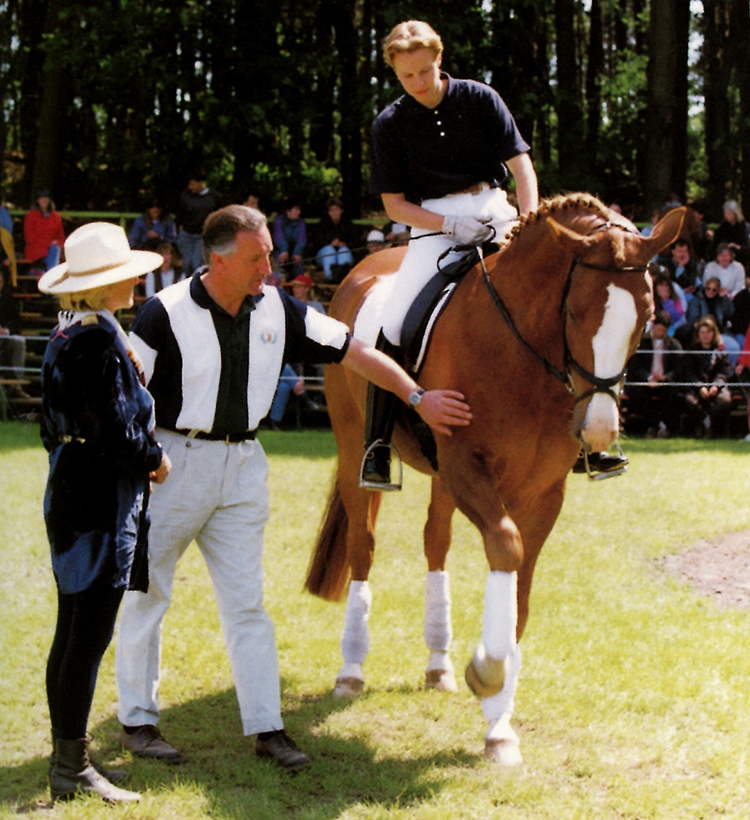
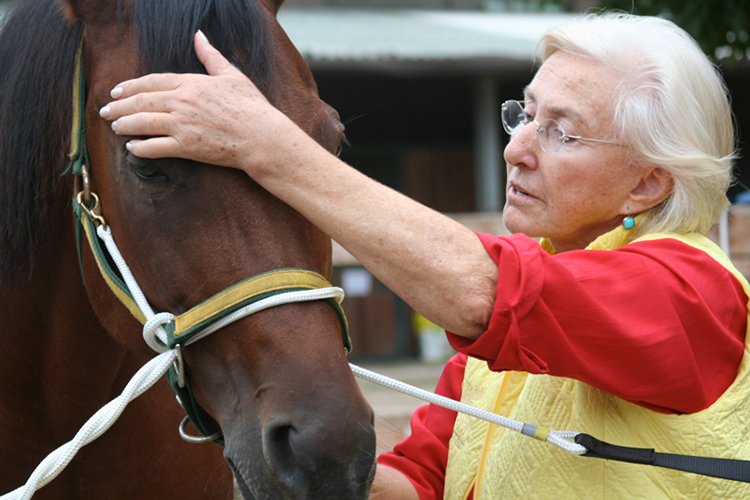
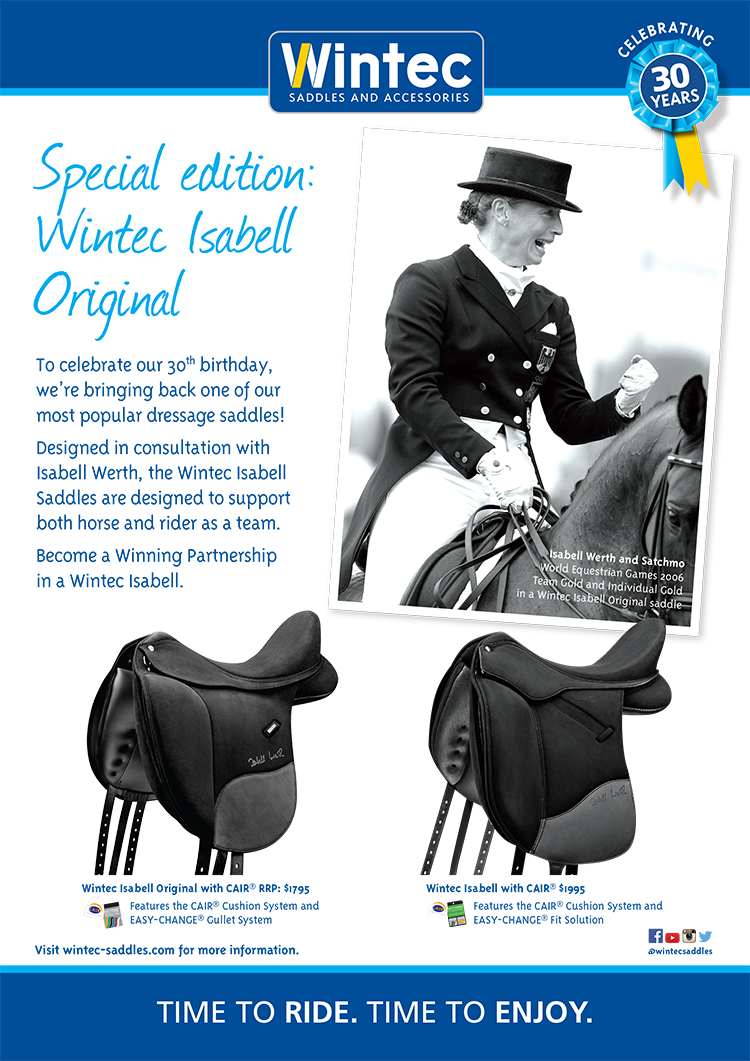
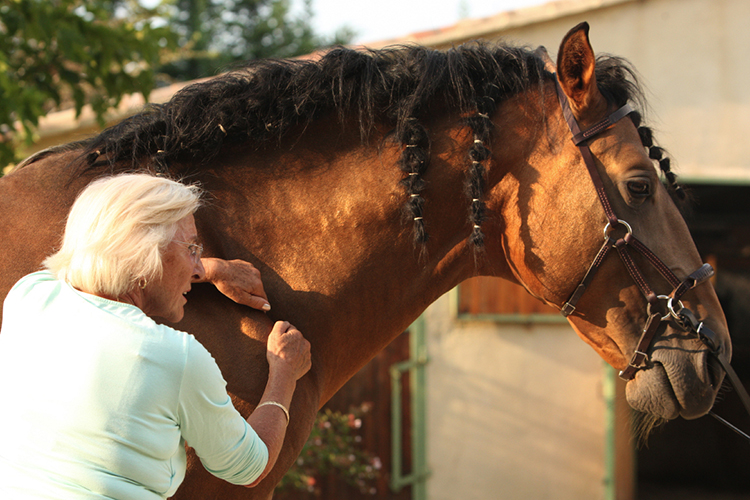
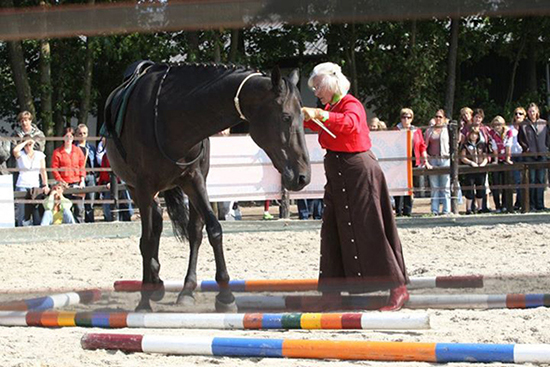
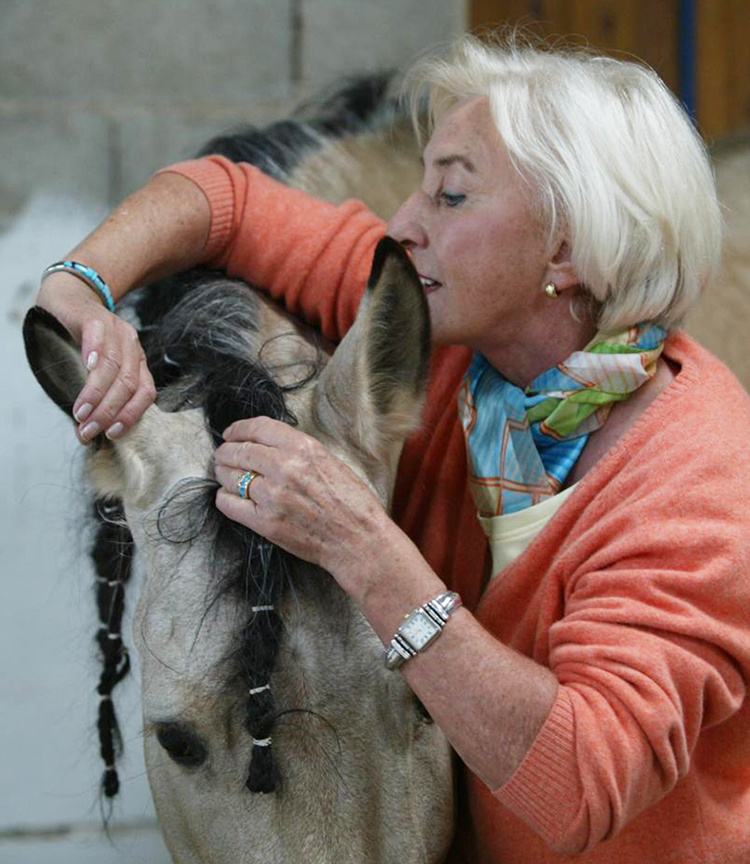
So wonderful, thanks for this great article. I am a professional Horse Trainer and I am using this Method since 1992 and it’s so amazing who fast we can create a change and make a horse successful and happy and trusting in us. Don’t know an other method who works that fast and easy, with kindness and understanding.
Thank you Linda, for this wonderful work